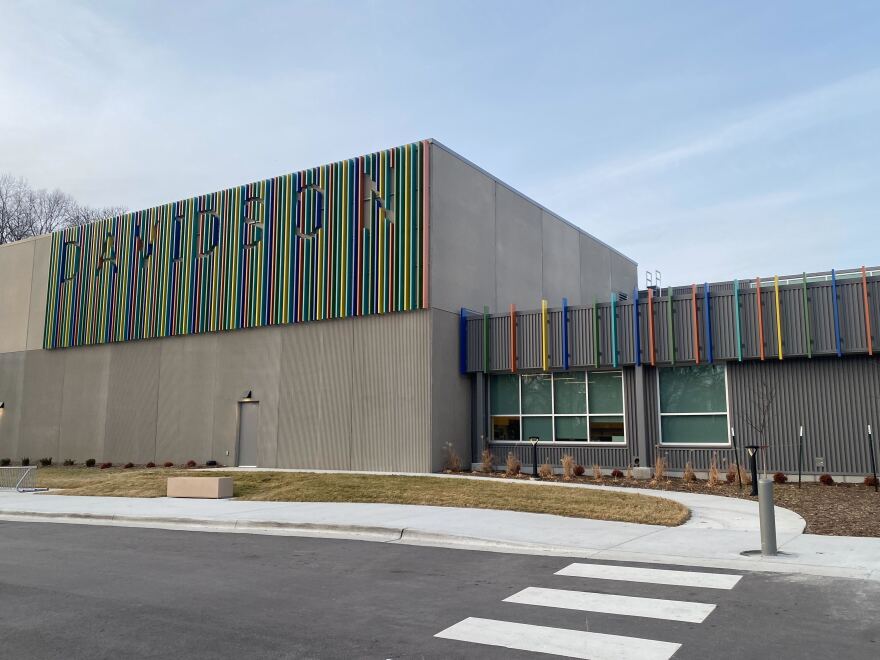Three years after the COVID-19 pandemic drove down enrollment numbers in schools across the country, Kansas City districts are getting a better idea of just how many students are in their classrooms.
Public school enrollment in Missouri declined by nearly 30,000 students when schools shut down to prevent COVID spread in the 2020-2021 school year, a 3% drop from the previous year.
North Kansas City Schools has already rebounded to its pre-pandemic enrollment as the number of students in the district’s classes steadily increases On the opposite side of the metro, the Hickman Mills School District has seen a sharp enrollment decline.
Both districts say they planned for their enrollment changes, and have been adjusting facilities and services to keep up.
Hickman Mills' enrollment decline started before COVID
Enrollment at Hickman Mills dropped by 15% in the last five years, from 5,565 students in 2018 to 4,758 this year.
Superintendent Yaw Obeng said multiple factors beyond the pandemic contributed to the enrollment decline – like disinvestment within district boundaries and shifting populations across the Kansas City area.
Obeng said there’s a large senior population in the area, but not many new families.
“We used to be kind of the suburb of Kansas City at one point, and people used to move out here. Lots of kids in the district, lots of good programming,” Obeng said. “But these kids grew up, went to school and they didn't come back to the community.”
The Hickman Mills School District sits in a high-poverty area of south Kansas City, with a median household income of $45,101 and 36% of its children living below the poverty line.
Cerner, the computer and information technology company, built a 290-acre campus off Bannister Road that was expected to jumpstart community revival around Hickman Mills, but that hasn’t materialized – and the $1.76 billion incentive package Cerner received to attract them to the area exempted the company from taxes that would have otherwise gone to the school district.
Obeng says projections of continuing enrollment decline led the district to close two elementary schools and reconfigure grade levels in most of its buildings.
Closing schools allowed the district to improve its financial picture even with fewer students in its seats, Obeng says.
Revitalizing a dormant community
Obeng hopes new development in the area will change the direction of the district’s enrollment and revive what he described as a dormant community. He said the creation of new single family housing two years ago was the first such project in the area in about 18 years.
Obeng said he hopes ongoing conversations with developers about adding more two- or three-bedroom housing units to the area will draw in more families.
Another incentive that Obeng hopes will bring more students to the district is a recent pay boost for teachers. Obeng said that the district went to the community with news of more housing and stabilizing enrollment numbers and asked them to pass a tax levy bond.
Voters overwhelmingly did so, allowing the district to rank highest in the Kansas City area for teacher pay. Obeng said teachers coming to the district will bring their own children with them, further boosting enrollment.
With the bond’s passage, Obeng said the district has moved from closing schools into a period of revitalization. He said the district is in the process of demolishing old buildings it had previously closed and rebuilding them.
Obeng said the district is already seeing an uptick in its pre-kindergarten enrollment and the arrival of immigrant families.
“In southern Kansas City, we often feel like we're the third stepchild to Kansas City,” Obeng said. “But we want people to know that some exciting things are happening here, and we're doing things to stimulate the growth in our community and in our students.”
In North Kansas City, some years bring an elementary school worth of new students
Meanwhile, North Kansas City Schools has been steadily gaining students for several years. Superintendent Dan Clemens says it’s seen jumps of up to 500 new students per year — the size of its average elementary school.
“I think we have a strong reputation for providing quality education, but also activities and athletics that are something that kids come to us and expect that we'll provide quality opportunities,” Clemens said. “(We) have good teachers, good leaders and I think people see that for who we are.”
Clemens credits the district’s enrollment increase to investmenting in its neighborhoods by rebuilding old schools, which in turn revitalized the surrounding communities. At the start of the 2022-2023 school year, the district opened two new elementary schools and extensively renovated another.
He also said the district gives families choices around their student’s education, like college and career pathways in high schools and a center for gifted programing.
The school district has seen a more than 4% jump in enrollment over the last five years. With 20,554 students, North Kansas City is the largest district in the metro area. Clemens said that number is only expected to grow — 245 homes are under construction within its boundaries and 1,540 lots are ready to build.
Enrollment did slow down because of rising housing costs and interest rates, said Clemens, but he anticipates it will speed up again once interest rates ease for families.
Growing pains
Clemens says it's better to be opening schools rather than closing them, but a rapidly growing population comes with its own challenges. New students come with additional dollars from the state, but Clemens said that extra money doesn’t completely cover costs.
When hundreds of new students enroll, they show up across schools and grade levels. Clemens says that means they can’t just hire a few more teachers to cover the growth. That impacts the district’s younger students the most, because districts try to keep those classes the smallest.
“We have to add teachers every year in kindergarten, first, second grade, because we just want to keep them small,” Clemens said. ”The foundation of learning is built at that point when you're learning to read, write and do math that we want to make sure we get that right.”
To keep up with the demand for teachers, Clemens said the district is looking at innovative ways to attract new staff. It will start to pay its student teachers in spring 2023. Student teachers, who are usually unpaid, will receive a $2,500 stipend for the semester if they teach in the district. In fall 2023, that stipend will increase to $5,000 per semester.
“What we're trying to do is get the very best student teachers to come work for us,” Clemens said. “As they're in here earning a few dollars, we can recruit them to be full-time teachers.”






